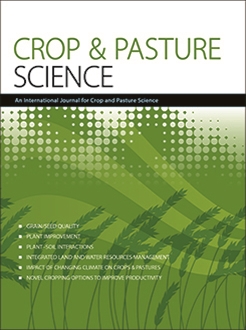Context. Root symbionts affect forage production by influencing host plant growth, but their specific effects on canopy intercepted photosynthetically active radiation (IPAR) and its conversion to plant biomass have not been investigated.
Aims. We evaluated the extent to which changes in plant biomass resulting from arbuscular mycorrhizal fungi (AMF) and rhizobia can be explained by alterations in IPAR and aboveground and total radiation-use efficiency (RUE: the ratio between shoot or total biomass and IPAR).
Methods. Under controlled greenhouse conditions, we evaluated single and dual inoculation effects of AMF and rhizobia on the forage legume white clover (Trifolium repens L.). Experimental units comprised canopies created in trays (50 cm by 34 cm by 13 cm deep).
Key results. On average, AMF inoculation increased IPAR by 43%, owing to greater leaf area and density, and decreased total RUE by 30%. Aboveground RUE was lower in AMF-inoculated plants without rhizobial inoculation, despite their higher leaf phosphorus status and greenness during the vegetative and reproductive stages, respectively. Rhizobial inoculation reduced the negative effect of AMF inoculation on aboveground RUE.
Conclusions. Both AMF and rhizobia alter white clover structure and function at canopy level. These variations may not be detected if the analysis considers only the impact of root symbionts on plant biomass.
Implications. These findings offer valuable insights into the intricate interactions between root symbionts and canopy-level processes, providing a basis for further research at agricultural scale.






